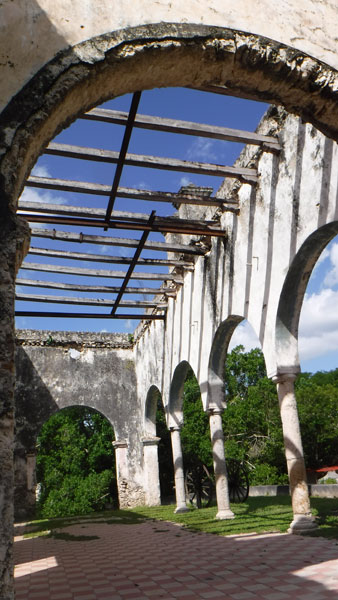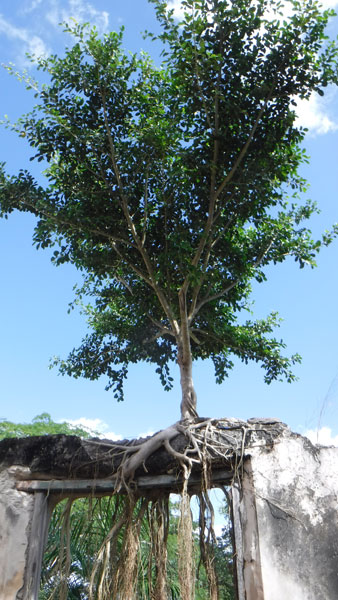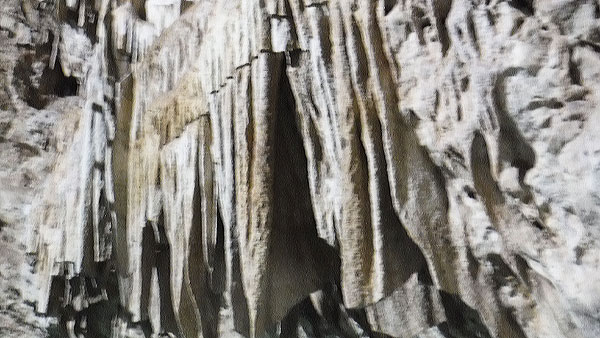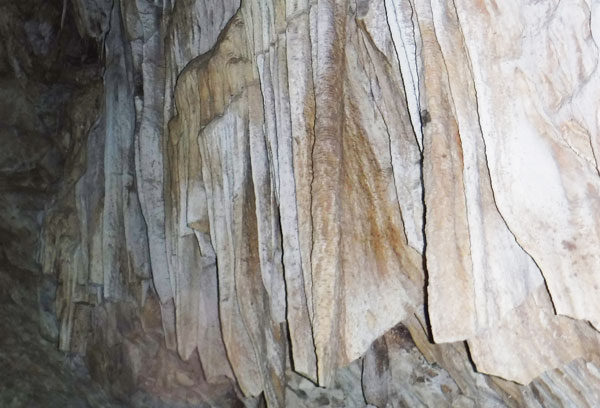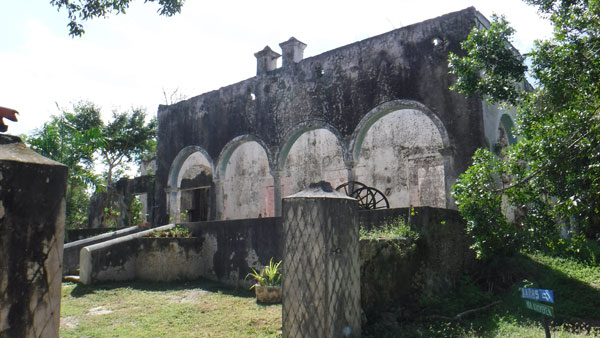
This hacienda is located just a short drive (or mototaxi) from the town of Homún, which is the center of quite a network of small ecotourism cenote sites.
We arrived at about 11AM, and only the staff was there, no visitors. Coming in the morning (they open at 10AM) is highly recommended–you’ll see in the photos that even though this was a Saturday, we had the three cenotes entirely to ourselves! People were arriving after 1PM, just as we were moving from cenotes to lunch.
You get your ticket at the little booth (MX$150; MX$80 for kids/seniors but we don’t know if that discount applies to non-residents). They fit you with a lifejacket which is required for entering the cenotes.
You can leave all your stuff in the car while you wander thru the unrestored hacienda building. It’s always amazing to see how the jungle is taking over, with trees growing out of the top and roots running all the way down the walls to the ground. The original pasta tile is still there on the floors.
Change into your swimming stuff in the very clean changing/toilet/shower building. Wear clothes you can throw on over your suit (HINT: and bring something dry to change in to a the end).
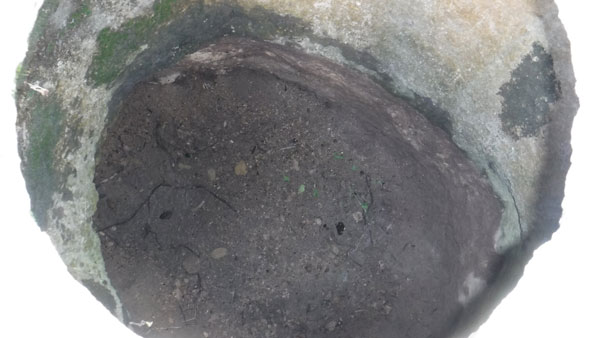
Now you start your walk! The first stop is a chultún, “a space that was made under a stone and was used as a warehouse for corn or water in times of drought or whenever one was made.” That quote comes from one of the small bilingual signs found along the route; the English is beautifully ungrammatical and very informative! (There are also large maps all the way along the trail.) This sign also talks about the Aluxes, who are the “clay dolls…which come to life through nature through a ritual that takes place on a full moon.”
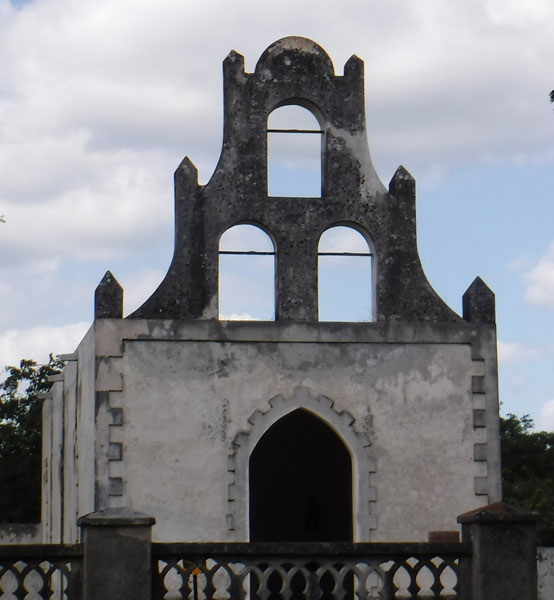
A bit farther on you can visit a small chapel, very well restored.
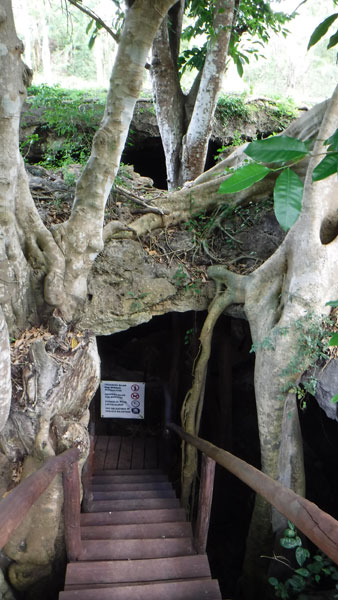
Next is the Ceremonial Cenote Kixné. You enter down a fairly steep but very solid stairway.
(By the way, this cenote is the far point from the starting point. We figure quite a few visitors never make it this far, even though it’s only about a ten minute walk from your car!)
Rather than a large, round, open cavern that we’ve been used to, Kixné is more of a crescent shape of water, with big rocks coming up in the middle. The sign tells you there are more than 100 ancient painted children’s hands on the walls, but you really have to know where to look. We might have spotted one, you can decide from the photo.
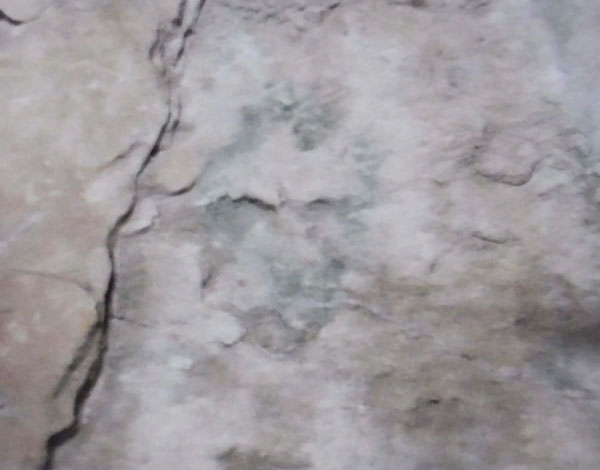
Maybe a hand painting_ 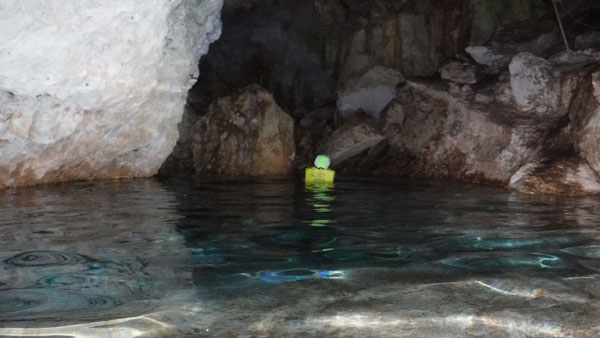
Floating in Cenote Kixne 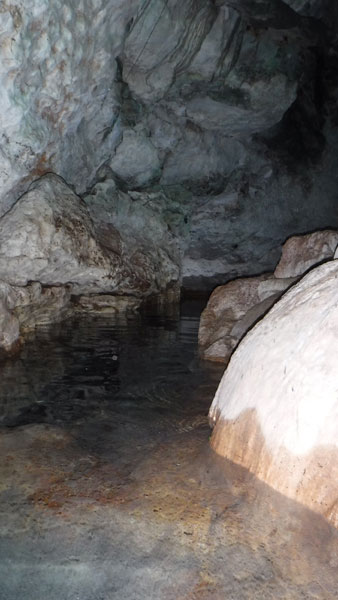
Crescent shape cenote Kixne
We entered the water at the far left end, but found a WAY better way would be more in the center of the crescent; you can go easily down the rocks, and there is a smooth, firm, shallow bottom to step on in the water.
The water is absolutely crystal clear. Float around on the buoyance of your lifejacket, and just enjoy the formations! Fall 2024 NOTE: we returned to find this cenote dry. Whether that’s permanent or we were just unlucky I don’t know.
Come back up the stairs and walk a few minutes to your next destination, Cenote Chenké, This one has more construction around it; the hacienda workers drew water from the well you can see in the photo. The water again is perfectly clear, and you can see the color if you’re lucky enough to have the sun in line with the opening.
We even saw a beautiful Toh bird fly into the trees that grow over the cenote, and then watched it fly down into the cave itself! This is where I wish I had a camera with a very long lens (but I’m happy with my waterproof one for these cenote trips).
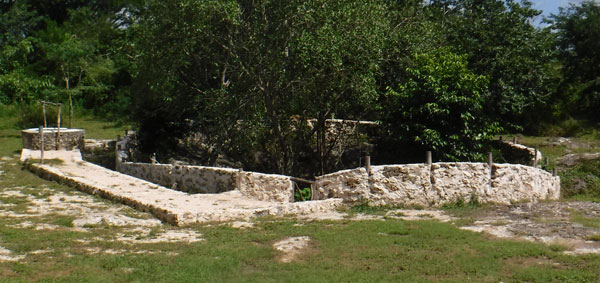
Structures around Cenote Chenke 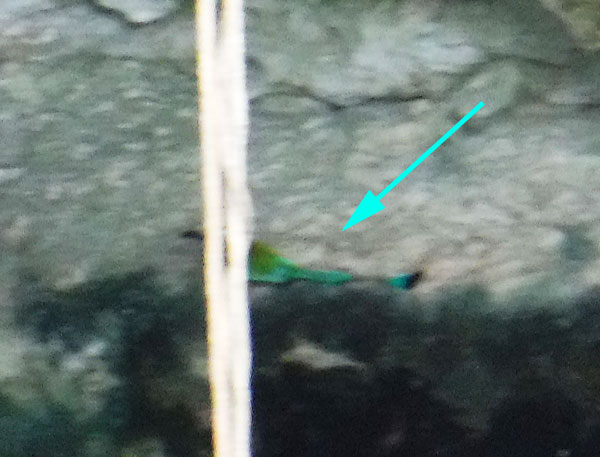
The Toh bird flew from the tree down into the cenote 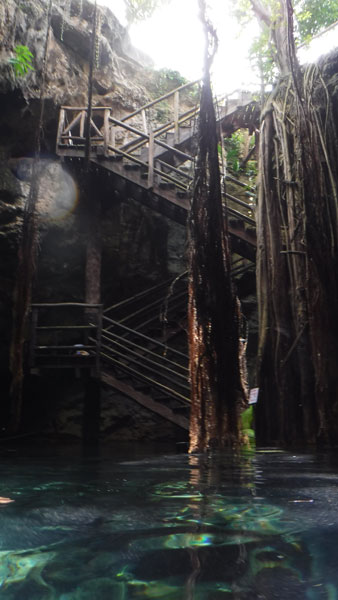
Looking up from the water at the long tree roots and stairs 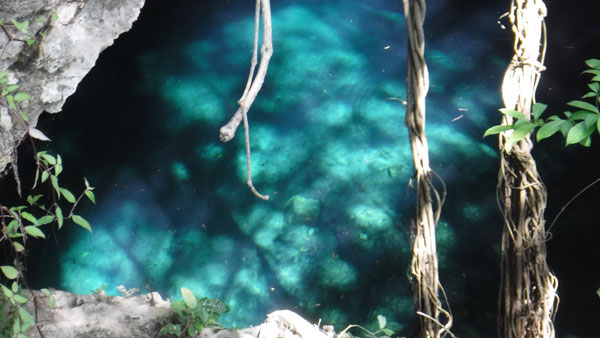
You can see how clear the water is
The trail comes back around to where you started, but there is one more cenote to enjoy. (We think that multi-stop mototaxi tours only let you go into this one to save all the walking time.)
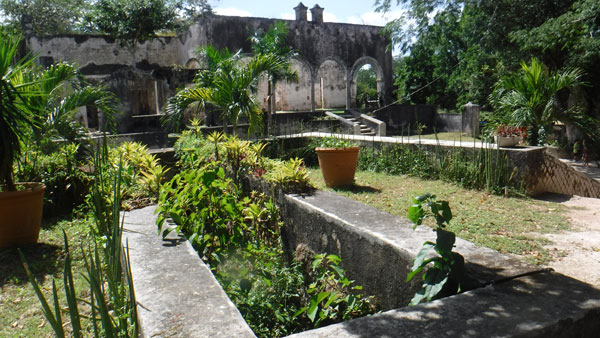
Another sturdy stairway takes you down, and it’s a much deeper climb down than the others.
This last cave, the Cenote de Noria, is totally breathtaking. It is a large, spherical dome With an amazing array of limestone formations all around you. Noria is well lit from a large fixture at the very top so you can really see the clarity and color of the water.
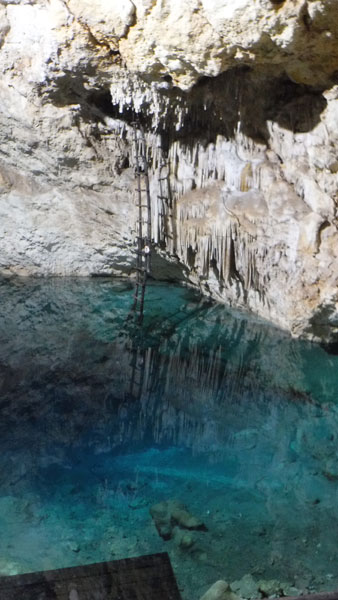
We have not seen these formations before. Imagine the Aurora Borealis done in limestone! Curtains of rock hanging from the ceiling, and you can touch them as you float around.
We climbed back out and grabbed our lunch from the car. There were other people around now, having come in the mototaxi tours that are everywhere around Homún. The hacienda has a very nice covered picnic area with a cleared lawn for camping, and lunch was very pleasant. (There is no food service! BYO.)
THE DRIVE HOME
This is YBR, so we took another route back. Highway 10 goes west from Homún thru Cuzamá and then to the town of Eknakan, home to an amazing neo-Gothic church under renovation. The road swings a bit more northwest to Acanceh. (You drive right by a large pyramid right in the center of town; stop if you can.) The route is shown on the MAP page here of our Website.
Getting thru Acanceh is a long, slow slog of traffic and topes. I think I missed a turn because I landed on a road filled with deep, nasty potholes! But that was only a few hundred meters until we hit the main highway 184 back to Merida.
It was a truly outstanding day. It would be nice sometime to spend a night in a hotel or hacienda in the region, and just go bouncing from one cenote to another. (A few do night tours, which would be special.)
